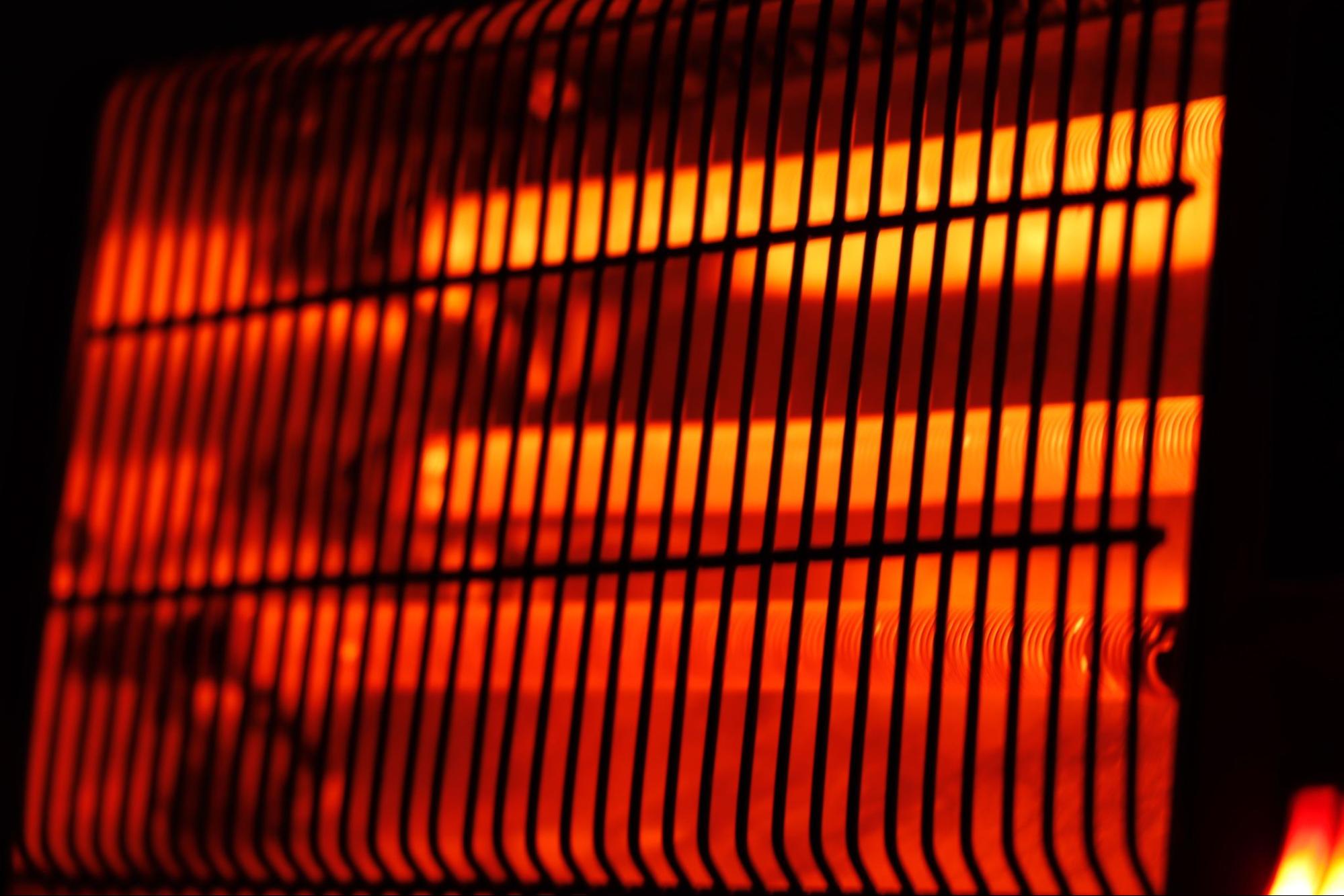How To Keep Your Gazebo Warm During Colder Weather
2nd Oct 2023

Winter is just around the corner, bringing with it chilly days and colder nights. But just because the temperature is dropping, doesn't mean your gazebo has to be off-limits!
Turning your pop up gazebo into a warm and inviting space during the colder seasons is entirely possible with some clever tactics and helpful tools. This blog will guide you through practical and effective ways to keep your gazebo warm and cosy, allowing you to enjoy your outdoor space even when it's frosty outside.
How Hard Is It To Keep A Gazebo Warm?
A lot of people think it’s tricky to keep a gazebo warm due to the fact it’s not a permanent structure. However, with the right techniques and equipment, maintaining a comfortable temperature is entirely achievable. That’s right - you can use your gazebo year-round! It involves insulating the space, choosing the correct heating equipment, and ensuring that the heat is retained effectively.
How To Insulate Your Gazebo For Colder Weather
Ensuring your gazebo is properly insulated is the first step to keeping it warm and cosy during the chilly months. By doing this, you can effectively trap heat inside, keeping the cold at bay. Here’s a detailed look at how you can achieve optimal insulation in your gazebo:
1. Using Insulating Curtains or Screens
Curtains or side panels designed with insulating materials are your first line of defence against the cold. They help in blocking out the cold wind and retaining the warmth generated inside the gazebo. When selecting curtains or screens:
- Material: Choose fabrics that are manufactured from 500 or 320 g/m² close mesh polyester. These fabrics are excellent for trapping heat inside.
- Coverage: Ensure the curtains or panels cover the entire length and breadth of the openings, leaving no gaps for cold air to seep in.
- Functionality: Opt for curtains or panels that are easily adjustable. This way, you can control the amount of exposure or coverage based on the weather conditions.
2. Laying Down Carpets or Rugs
The floor is a significant source of heat loss. A rug or specialised gazebo flooring can help in mitigating this, acting as a barrier against the cold ground.
- Thickness and Density: A thicker rug or carpet with a high density will provide better insulation. Consider materials like wool that have natural insulating properties.
- Size: Choose a carpet or rug that covers a significant portion of the floor, maximising the insulated area.
- Weather-resistance: Opt for materials that can withstand dampness and are easy to clean, making them suitable for outdoor use.
3. Utilising Gazebo Heaters
Did you know that heaters for gazebos exist? They can safely make a dramatic difference in temperature.
- Type: Various heaters are suitable for gazebos, such as infrared heaters and electric fan heaters. Each comes with its advantages and is worth considering based on your needs.
- Placement: Position your heater where it can distribute heat evenly across the space. The central part of the gazebo or a corner, depending on the heater type, could be ideal.
- Energy Efficiency: Consider heaters that are energy-efficient to ensure that you’re warming your gazebo without unnecessary energy consumption.

4. Combining Heat Sources for Optimal Warmth
Relying on a single source of heat might not always be the most efficient way to warm your gazebo, especially on particularly cold days. By strategically combining various heat sources, you can achieve a well-distributed, efficient, and cosy warmth in your gazebo.
- Strategic Placement: Position different heat sources in a way that maximises their efficiency. For instance, a floor heater can be complemented with a hanging heater to ensure that warmth is distributed from both below and above.
- Utilising Natural Heat: On sunny winter days, make the most of natural sunlight by positioning the gazebo to capture as much sunlight as possible, and complement this with your chosen heat sources.
Can Patio Heaters Be Used in a Gazebo?
Using a patio heater can be an efficient way to warm your gazebo during the colder months, transforming it into a snug and welcoming space. However, when placed incorrectly or too near the gazebo’s material, disaster can strike. This is why it is far more beneficial to use heaters specially designed for gazebo settings.
Understanding The Heat Requirements For Your Space
Every gazebo is unique, and understanding its specific heat requirements will guide your choice of combination.
- Size & Design: A larger gazebo may require a more powerful primary heat source, supplemented by secondary sources, while a smaller one might get too warm too quickly. Similarly, a gazebo with more openings might lose heat faster.
- Usage: If you’re hosting gatherings, you might need more heat sources. For personal use, a single primary source combined with a secondary might suffice.
- Environment: In areas with harsher winters, the combination of heat sources will be different than in milder climates.
Safety Tips for Heating Your Gazebo
Ensuring that your gazebo is not only warm but also safe is paramount. While heating options bring warmth and comfort, they also carry risks that necessitate precautionary measures. Below are safety tips to consider while heating your gazebo, guaranteeing you a warm, worry-free environment.
Avoiding Fire Hazards
Fire safety should always be a priority when you have heating elements in your gazebo.
- Distance: Maintain an appropriate distance between your heating devices and flammable materials such as curtains, furniture, and decorations.
- Turn Off: Always remember to turn off the heating devices when you're not in the gazebo to prevent any accidental fires.
- Safety Features: Consider heaters and other heating devices with built-in safety features like automatic shut-off in case they tip over or overheat.
Ensuring Proper Ventilation
Good ventilation is key, especially when using gas or wood-burning heaters, to prevent the build-up of harmful fumes.
- Air Flow: Ensure there’s a continuous flow of fresh air in the gazebo, which is particularly important for gas heaters that emit carbon monoxide.
- Avoid Enclosure: Avoid entirely closing off the gazebo. Leave some openings, or intermittently open up the space to allow for the exchange of air.
- Consider the Heater Type: Electric heaters require less ventilation compared to propane or wood heaters. Choose a heater type that aligns with your gazebo's ventilation capabilities.

Regularly Checking and Maintaining Your Heat Source
Regular maintenance ensures the efficiency and safety of your heating devices.
- Inspections: Regularly inspect your heaters for any signs of wear or damage. Check cords, fuel lines, and other components to ensure they are in good working condition.
- Cleaning: Keep your heaters clean from dust and debris that could potentially cause malfunctions or fires. Follow manufacturer guidelines on cleaning and maintenance.
- Professional Check-ups: For certain types of heaters, such as gas, it might be advisable to have them checked by professionals periodically to ensure they are operating safely and efficiently.
Keeping your gazebo warm in colder weather involves thoughtful insulation, effective heating solutions, and a consideration of personal warmth and safety. By implementing these tips, you can enjoy a cosy and comfortable gazebo throughout the colder seasons.
Frequently Asked Questions
What is the safest heater to use in a gazebo?
The safest heater to use in a gazebo is typically an electric heater designed for outdoor use. Electric heaters don’t emit harmful gases, reducing risks associated with ventilation. Moreover, many come with safety features such as tip-over protection and overheating auto shut-off. Ensure that the heater is rated for outdoor use, weather-resistant, and always follows the manufacturer's guidelines for usage and installation.
How can I keep my gazebo warm without electricity?
Keeping your gazebo warm without electricity can be achieved through various methods. You could use heaters that are specifically designed for outdoor spaces and insulate your gazebo by using weather-resistant curtains and rugs. It’s also important to ensure that there are no gaps for cold air to seep in. Additionally, using blankets, throws, and warm clothing can contribute to maintaining warmth within the gazebo.
Can I use a fire pit in my gazebo?
Using a fire pit in a gazebo is possible, but it requires a great deal of caution. Ensure that the gazebo is well-ventilated, and there’s enough clearance above and around the fire pit to prevent fire hazards. Fire-resistant mats can be used underneath the fire pit to protect the gazebo’s flooring. Always have a fire extinguisher or water source nearby and avoid using the fire pit in windy conditions or when the gazebo is covered with flammable materials.
What should I consider when choosing a heater for my gazebo?
When choosing a heater for your gazebo, consider factors such as the size of the space, the heater's heat output, and its fuel type (electric, gas, or propane). The heater should be powerful enough to warm your gazebo effectively but not so powerful that it overheats the space or wastes energy. Also, take into consideration the heater’s safety features, weather resistance, and suitability for outdoor use.
Looking for a gazebo heater? We have an excellent range here at TFH Gazebos.









